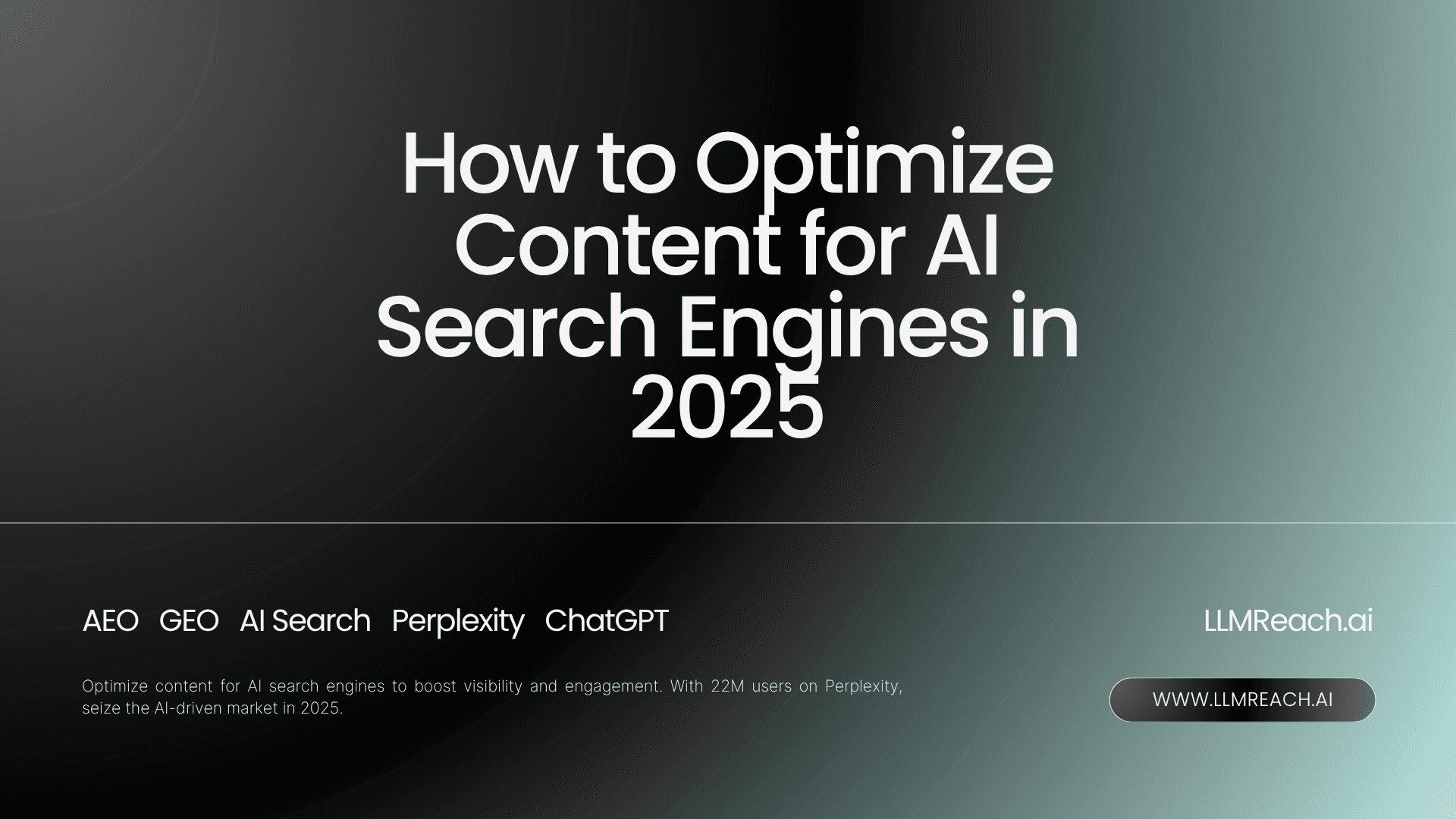
How to Optimize Content for AI Search Engines in 2025
To optimize content for AI search engines by 2025, focus on emerging platforms like Perplexity AI, which has 22 million monthly users. With Google’s market share dropping to 89.34%, adapt strategies to include AI-driven alternatives. The global AI market is projected to reach $243.72 billion, highlighting the importance of aligning content with AI advancements for increased visibility and audience engagement.
Understanding the AI Search Landscape in 2025
The AI search landscape is evolving rapidly, with significant implications for content optimization strategies in 2025. The global AI market is projected to reach approximately $243.72 billion, reflecting a compound annual growth rate of 27.67% (Baytech Consulting).
While Google continues to dominate ~90% market share, platforms like ChatGPT and Perplexity are gaining traction—especially among younger demographics. Perplexity AI has ~22M MAUs, positioning itself as a substantial alternative (Search Engine Journal). Brands need to adapt optimization strategies for visibility across AI-driven platforms.
The Shift from Traditional SEO to Answer Engine Optimization
Traditional SEO focused on ranking pages; AEO optimizes for direct answers and conversational engagement. As AI tools reshape interactions, brands must structure content for AI comprehension to increase authority and engagement.
How AI Search Engines Process Content Differently
AI engines prioritize intent and context over keywords, favor concise, relevant answers, and leverage structured data. Align content for digestibility and clarity to improve citations in AI-generated answers.
Core Principles of AI Search Optimization (AEO and GEO)
AEO enhances visibility with direct, concise answers aligned to intent. GEO focuses on technical optimization for AI crawlers: structured data, AI visibility audits, and real-time monitoring (Seer Interactive).
Semantic Relevance Over Keyword Density
Craft comprehensive, natural-language answers; use schema markup to improve AI comprehension and citation potential.
User Intent as the Primary Ranking Factor
Map common audience questions and structure content with direct answers to elevate visibility in AI responses.
Content Strategy for LLM Optimization
Develop intent-driven content with conversational tone, structured data, and clear hierarchy to boost citations and engagement. Brands adopting these practices report ~127% average visibility increases in AI mentions (Progress).
Creating Comprehensive, Intent-Driven Content
Answer audience questions directly; add schema to improve interpretability and citation likelihood.
Natural Language and Conversational Tone
Use everyday language to simplify complex ideas and align with how users query AI platforms.
Long-Tail Keywords and Question-Based Queries
Target specific, question-based phrases to better match intent and improve inclusion in AI results.
Structural Optimization for Generative Engine Visibility
Organize information semantically; implement schema for articles/FAQs; create snippable, extractable content with bullets and lists (Progress).
Advanced LLM-Specific Optimization Techniques
Use structured data and conversational tone to resonate with LLMs; prioritize clarity and value in answers (OpenAI).
Getting Cited in ChatGPT, Claude, and Perplexity
Provide concise, direct responses and implement structured data to aid interpretation and increase citations.
Building Authority Through Citation and Mentions
Create high-quality, reference-worthy content and monitor AI mentions to refine strategy and strengthen authority.
Technical Implementation and AI Visibility Infrastructure
Integrate schema, maintain semantic structure, and conduct AI visibility audits to remove friction (Reddit).
Hybrid AI-SEO: Balancing Traditional and Generative Rankings
Blend traditional SEO with GEO by aligning content to both keyword relevance and AI context needs.
Performance Optimization for AI Crawlers
Ensure clean structure, fast responses, and clear content types for better parsing and presentation.
Measuring and Tracking AI Visibility
Track citations across AI platforms, analyze engagement, and iterate on winning formats. Many brands report ~127% increases in AI mentions with disciplined tracking (Google).
Monitoring Real-Time AI Mentions and Citations
Use tools to follow mentions in real time and identify content that AI prefers.
Analyzing User Engagement Metrics for AI Search
Evaluate CTR, time on page, and interactions to guide optimization roadmap.
Best Practices and Future-Proofing Your Content Strategy
Update content continuously, align with user questions, and adapt to AI shifts. Use analytics to refine and sustain visibility (Perplexity AI via SEJ).
Frequently Asked Questions
What is Answer Engine Optimization (AEO)?
AEO optimizes content for AI platforms that deliver direct answers and conversations, not just rankings.
How can I adapt my content for AI search engines in 2025?
Provide concise, clear answers with structured data and conversational tone for platforms like ChatGPT and Perplexity.
What role does user intent play in AI content optimization?
User intent is central; AI systems surface the most relevant, intent-matching answers.
How can I measure the effectiveness of my content for AI searches?
Track CTR, time-on-page, and AI-driven mentions to gauge performance and iterate.
What types of content perform best on AI search engines?
Short-form answers, FAQs, and conversational articles with structured data perform best.
Continue your journey: Contact us · Case Studies · Top 5 GEO Agencies 2025 · 5 Best Agencies for LLM Citations · Get Your Brand Cited by ChatGPT